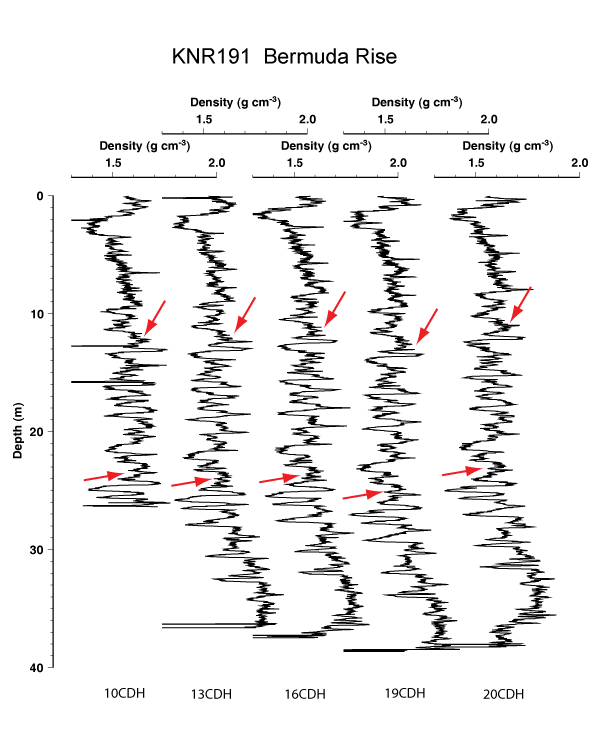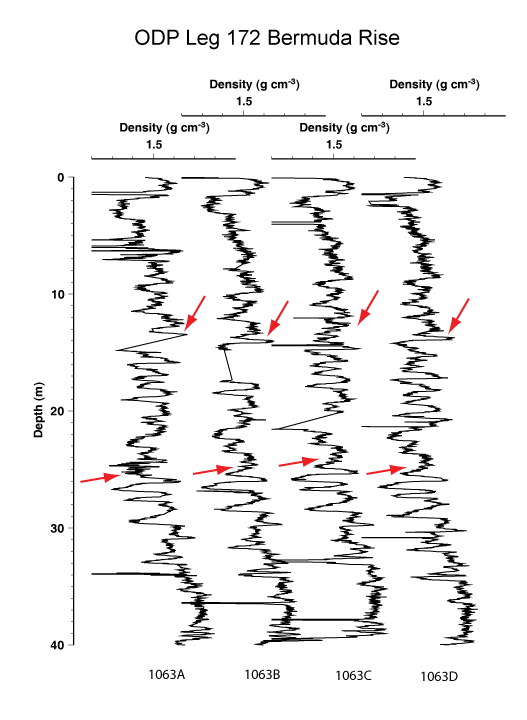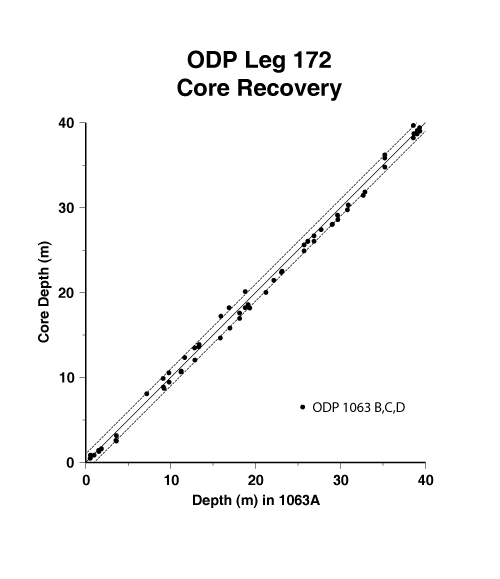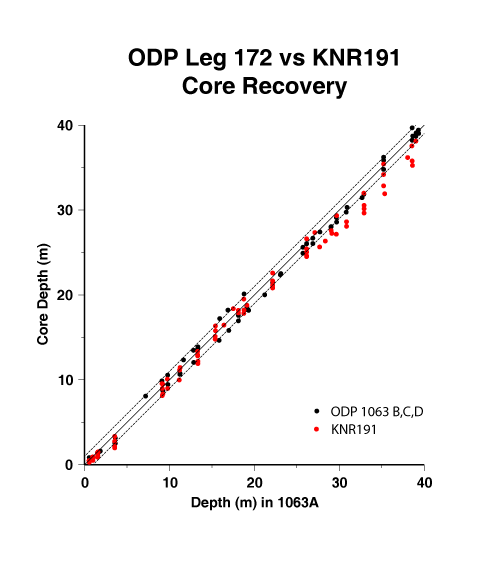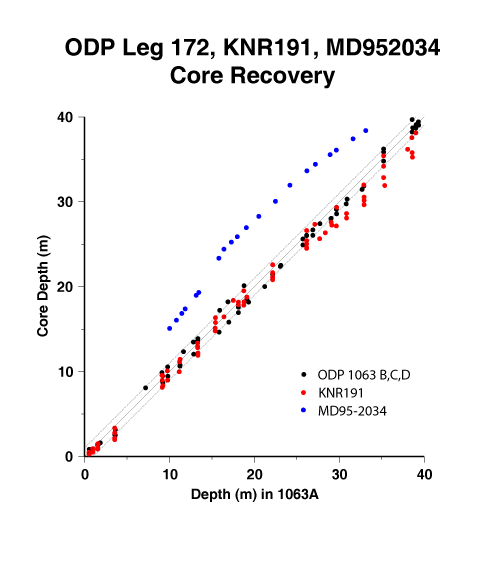Comparison to Other Systems
(Advanced Piston Core and Calypso Core)
By comparing the sediments recovered by KNR191 with previously recovered core sections, we can evaluate the performance of the new long coring system. The cea trials cruise conducted its coring operations at Bermuda Rise at the original site of KNR31-3-5GPC (33.69º N 57.58º W) . This location was subsequently cored by the Marion Dufresne Calypso core in 1995 and by Ocean Drilling Program Leg 172 in 1997.ODP Site 1063 cored the same location four times using the Advanced Piston Core (APC) system. By its very nature, the APC provides the ideal standard section to compare with other piston core systems because the piston is in a fixed position at the bottom of the drill string and cannot more with respect to the sediments (except for heave related to sea state conditions, which is common to all coring systems).
We will compare GRAPE density records which were routinely collected at sea by the KNR191, ODP172, and MD95. These measurements provide easy identifiable lithostratigraphic measurements to correlate the sections. We arbitrarily choose ODP Hole 1063A as the standard and compare the sections by identifying equivalent stratigraphic levels and plotting them in an X-Y plot. .
The first comparison (Figure 3) compares ODP Hole 1063A with ODP Holes 1063B, 1063C and 1063D. By comparing these four holes, the degree of local stratigraphic variability can be quantified since these holes were recovered within tens of meters of one another using the same coring system. Equivalent stratigraphic levels fall within 1 meter of each other.
The same comparison including KNR191 piston cores (Figure 4) shows that the new long core system is duplicating the recovery of the APC for the upper 28 meters or so. Thus there is no evidence of stretching as a result of the coring process. Below this level, the recovery for three of the KNR191 cores falls below the recovery for ODP Hole 1063A, implying that new coring system is compressing the stratigraphic section during the latest stages of the coring process. For two of the new long cores, this compression did not occur because we used a core cutter with a diameter just slightly smaller than the inside diameter of the core liner. We believe that this reduced the internal friction in the core barrel and enhanced core recovery.
The same comparison using the density record for MD95-2034 (Figure 5) documents that this core suffered from some stretching in the upper sections and also compression in the lower sections. (The stretching of this coring system was first pointed out by Skinner and McCave (2003) by comparing piston and gravity coring systems at the same location near the Iberian Peninsula.)
